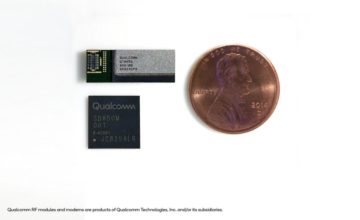In our recent article, How 5G Will Bring Internet to the Farm Land, we explored how emerging technologies in wireless are promising to bring high speed wireless coverage to an often overlooked area of consumers, those in rural communities throughout America. This was a hot topic of discussion at the recent Competitive Carriers Association Mobile Carriers Show earlier this month.
It seems as if 5G and virtualization might be the key towards providing rural communities with reliable wireless service, if a recent panel of industry experts is right. Rural carriers have historically had a more difficult time achieving the kind of wireless coverage and capability that citizens in major metropolitan areas take for granted. Carriers have been trying to amend this concern for years and now, there might be a solution.
At the CCA show, a panel was brought together to discuss the best way to help bring dependable wireless service to rural environments and communities. Representatives from Sprint, Nokia, Huawei Technologies and Interop Technologies took part in the panel, discussing the matter at hand.
Ever since wireless communication became a reality, it has helped shape the future of our world. But in some communities, especially in rural America, those services are significantly less dependable. Even with advancements such as ever evolving LTE support and upcoming 5G services, these communities still need more from their local carriers.
David Debrecht, Nokia CTO for US Majors, spoke about the inherent difficulties that rural carriers run into while trying to provide service. This biggest concern comes from procuring enough revenue to upgrade and maintain the improved systems that are necessary for the system to work as well as developers need it to. With smaller local economies, it’s just not enticing enough for larger carriers to invest time and money into the construction of necessary advanced infrastructure when the profit will be minimalized by the location. Voicing a similar view, Stephen Zitnik, EVP and CTO with Interop, pointed out an obvious reality: these are companies, not government organizations. They have to show a financial return to the investors, and conducting the necessary changes to rural communities to bring their wireless capabilities up to the metropolitan standard just doesn’t produce enough revenue to justify it.
When asked what some rural carriers could do to amend this challenge, the members of the panel voiced the shared opinion that carriers in those areas need to find the potential uses and areas of interest for local customers and companies. With the increasing excitement over the potential power of IoT (internet of things) and the expanding potential of 5G, consumers all around the country are excited to expand the limits of what their wireless service can do.
Especially given some of the advancements that 5G promises (ranging from supporting self-driving cars to smart bandages and beyond), that demand for 5G is only going to increase. With that incentive, companies might be more likely to install systems into these towns, and hep expand the wireless capabilities in the area. On top of that, the panel also spoke about how the ever-increasing development and deployment of virtualization technologies could help bring strong wireless service to these areas. Virtualization can be used to ease transfers of information between networks and operators by sharing spectrum and isolating parts of the network for specific tasks and needs. Some at the panel, especially David Debrecht, believe that by utilizing virtualization, rural carriers will be able to piggyback on larger operators and spectrum – thereby bringing better service to smaller areas that were previously forgotten about.




